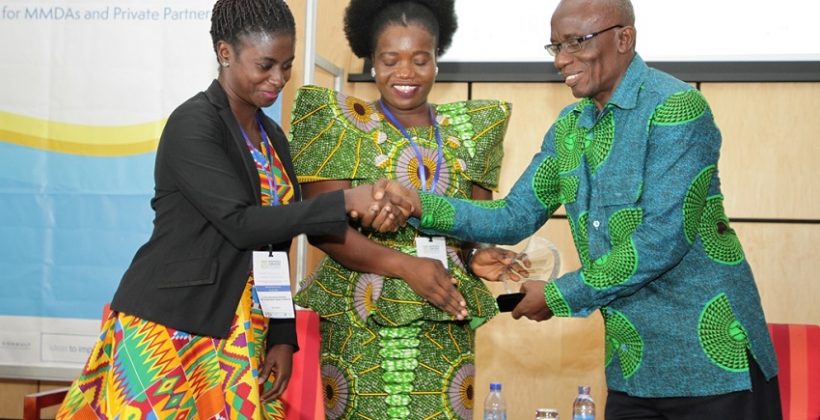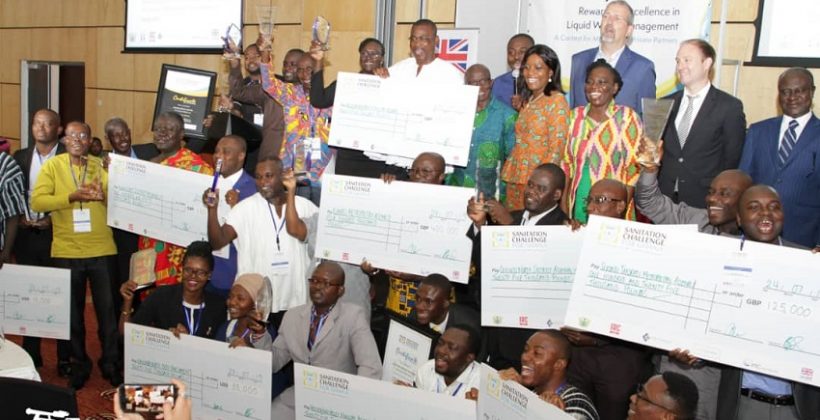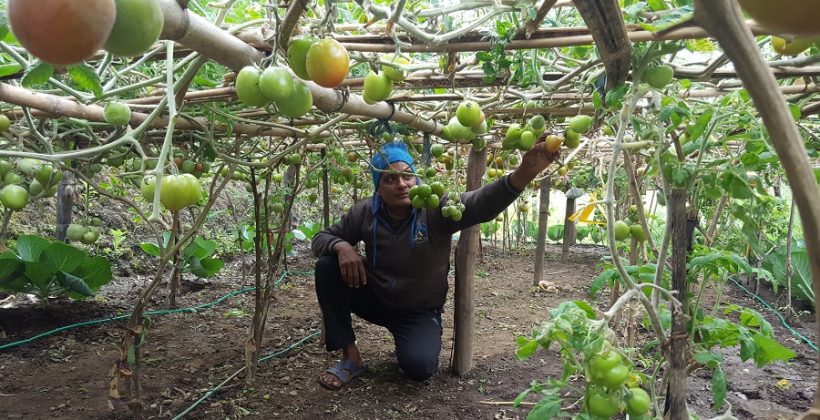
Interest in prizes has grown exponentially in recent years, built on a long history of innovation. There are many oft-cited examples, like the 1714 Longitude Prize that helped revolutionise sea navigation, and Napoleon’s Food Preservation Prize that in 1809 led to the canning of foods that we still use today. The promise that prizes offer lies in a specific type of prize: the ‘inducement prize’ that aims to induce or stimulate innovation in contrast to the more common ‘recognition prizes’ that focus on rewarding excellence in general (like the Nobel Peace Prize, or in the environmental field, the Equator prize).
The conventional space for most inducement prizes is early in the innovation cycle, such as broadening the range of potential participants, creating new ideas or finding specific technological solutions. While many prizes are for commercial gain, those that have a broader developmental aim often assume that their prize will lead to sustained social and behaviour change. But what is the evidence?
Over the past six years, Ideas to Impact has been funded by DFID (now FCDO) to experiment with a suite of prizes to see if they could contribute to lasting social and environmental benefits. Itad was evaluation and learning lead for a consortium led by IMC Worldwide with The Blue Globe, Energy 4 Impact and the Institute of Development Studies.
About the prizes
There were seven prizes that aimed to induce solutions for climate change adaptation, energy access, and water, sanitation and hygiene. Each prize was designed and run by a prize team, who promoted the prize, engaged with participants and coordinated the judging and award process.
Examples of the adaptation and energy prizes include1:
- The Climate Information Prize (CIP): a two-stage competition (the Wazo and Tekeleza prizes) that ran in Kenya between 2015 and 2018. These aimed to encourage local innovators to develop climate information services that could be accessed and used by farmers to reduce their vulnerability to climate change.
- Adaptation at Scale (A@S): a two-stage prize (the Protsahan and Karyanwayein prizes) that ran in Nepal from 2016 until 2019. These prizes aimed to reward and promote innovative ways to scale up and expand the reach of climate change adaptation innovations.
- Global LEAP Off-Grid Cold Chain Challenge (OGCCC): This challenge aimed to identify and reward the most appropriate technologies for off-grid cold storage, and, by promoting the technologies and their associated business models, stimulate appropriate support from donors, investors and government.
Thinking beyond the prize money
The Ideas to Impact consortium theorised that prizes had the potential to produce at least nine different ‘prize effects’ beyond simply the financial award. These ranged from the social media ‘buzz’ that raised awareness of an issue, to bringing people together in a network and stimulating new economic activity.

Across our evaluations, it was clear that there were two recurrent benefits to the prizes. The first was to attract new entrants to solve problems in new ways (the new). The second was to maximise participation, which increased the number of people and organisations working on a particular challenge (the many). These benefits complemented each other and offered something additional to conventional research and development (R&D) grants.
The benefits also went beyond the winner. There were examples of non-winners who were motivated to advance their ideas, develop new contacts and share solutions. For example, the Climate Information Pastoral Unit established their climate information service in response to the Prize. They did not win any prize money but went on to grow their team, increase the variety of data sources they drew their information from and expand their user base and geographical coverage.
At the point of awarding the Ideas to Impact prizes, it was too early to tell what lasting impact would occur. Importantly, we wanted to gather insights about whether there are prize effects that are strong enough to induce innovation ‘leaps’ as well as contribute to lasting social and environmental change.
For CIP, we had the chance to return one year after award and found that the majority of initiatives developed under the prize (including those of both winners and non-winners) were still being implemented, with climate information being delivered to an increased number of potential users. For example, the CIP winner, Farmers Pride, had gone on to integrate their climate information activities into their broader technological and commercial activities, and subsequently expanded their franchise, user base and partners.
For A@S, participants showed a willingness to continue their activities beyond the award, engaging local government, the private sector and communities in their initiatives. Many participants secured local government support during the prize process, aligning with government plans and collaborating with and leveraging funding from government.
For both prizes, innovations had not yet taken hold at a systemic (and sustainable) level, and there was still a strong reliance on the persistent motivation of participants.
Improving the impact of prizes: What we learnt
While using prizes to contribute to broader social and environmental change is not easy, the lessons from Ideas to Impact provide insights on how to increase this likelihood.
1. Proactively take account of the enabling environment – prize outcomes rely heavily on the actions of external stakeholders and the broader context. With little opportunity to influence external factors once a prize is launched, this places more onus on the teams’ robust identification of the ‘prizeable problem’ in the first place, as well as a greater reliance on assumptions holding about how an innovation will be taken up. Some Ideas to Impact prizes did not work in the way expected, as assumptions about the enabling policy environment, external institutional support or investment opportunities did not hold true. This leads to our second point.
2. Adapt in response to participant feedback – it was apparent that had prizes not taken an adaptive approach they would have been less likely to succeed. The Ideas to Impact teams acted nimbly to adapt to issues experienced by sometimes increasing solver support, introducing new categories of prizes (i.e., aimed at levelling the playing field between different organisation types) and partnering with local organisations. Almost all the prizes were multi-staged, often with a first ‘ideation’ stage preceding the core ‘inducement’ phase that allowed design adjustments to be made between the two prizes.
3. Deliberately address the inclusion (and sometimes exclusion) of participants – one of the benefits of using prizes is that they are able to maximise the number of people who take part. Running prizes in a development context needs a keen focus on who the participants are, in order to achieve the desired development outcomes – for example, with A@S, specifically targeting community-based organisations to encourage grassroots innovation and meaningful community participation. The set of prize eligibility criteria was a valuable tool in targeting participation.
4. Re-balance the burden of risk that falls on prize participants – prizes transfer risk to participants as funders only pay for ‘success’ at the point of award. It is likely that a higher prize purse will encourage participants to take greater risks, and critically, this becomes more acute when running a prize in resource-poor contexts, where participants may not be in a position to take on such a level of risk. In addressing this, careful calibration and insight are necessary in order to tailor each prize design: asking enough participants to shift their behaviour, without asking too much to deter them from participating, nor offering too much reward that they take unreasonable risks.

Hybrid prize designs
What appears to be clear, is that participants need to be at the centre of the prize process – particularly as it is apparent that they will be the driving force in sustaining the innovations’ impact in the medium term.
When thinking about inclusion, and attracting the best solvers in low-income countries, it is essential to consider the sometimes substantial demands placed on prize participants. This suggests that often more solver support (including non-financial incentives, training and other capacity-building) is necessary to help prizes achieve their intended social effects. This was identified for A@S, which engaged resource-constrained participants in Nepal with the aim of scaling up community-driven initiatives in response to climate change.
And, in some cases, there is a need for some form of post-award or complementary support. For CIP, this could have included integrating the prize within a broader initiative such as the Weather and Climate Information Services for Africa (WISER) programme, which is addressing other parts of the climate information system in Kenya. Similarly, the OGCCC prize evaluation similarly supports the notion of hybrid designs, highlighting the need to link the prize to a mechanism that helps deploy promising technologies and support market development.
Overall, such hybrid prize models better support participation in (and beyond) the prize itself, and in doing so, offer greater potential for sustained change. Without this, prize teams risk focusing too much on technology-led solutions rather than the consequential social and behavioural changes needed to address the climate emergency.
If you want to find out more about what we have learnt from six years of running global prizes, read our paper (not currently open access). You can access a pre-print version on the author’s website.
Get in touch with Clare Stott or Chris Barnett if you would like to discuss this work further.
You can also find out more about the I2I project from their final blog.

